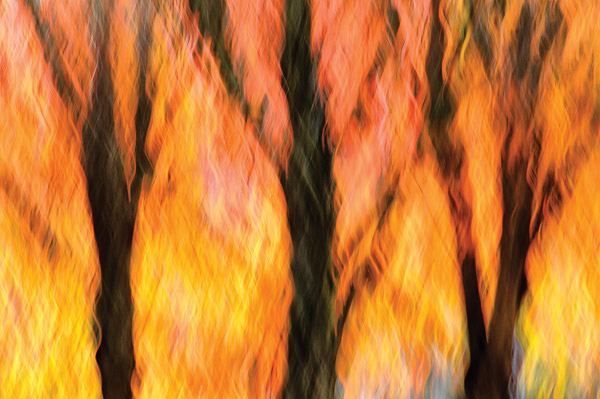Backlit Swipes: A Novel Approach To Fall Photography

All Photos © Stacey G. Lloyd
If you haven’t tried this technique, start by finding a grove of tall trees (#2). Set your shutter speed between 1/8-1/2 sec and while moving your camera in line with the tree trunks press the shutter. Make sure you start moving the camera before you press the shutter release and keep moving as the shutter closes (somewhat like swinging through in golf or tennis). Try this multiple times until you end up with an image you find pleasing. Tweak the shutter speed or your rate of motion as needed. Once you have the hang of it, try different subjects—moving the camera with the dominant lines in the frame. That may be straight lines, V’s, circles, etc (#3).

Now that you have the basic swipe technique down, combine it with backlit subjects. The backlight can be from early morning or early evening sunlight or from a bright overcast sky. Backlit autumn trees make for wonderful subjects (#4). As is typical of backlit subjects you may need to compensate your exposure by +0.5 to +1.5 EV. You may also need to add a polarizer or adjust your ISO to get the longer shutter speeds (#5).


Be careful not to catch the sky in your shots. This will result in white streaks (#6). Don’t worry too much about hot spots because the camera motion often blends them with darker tone areas, keeping them from burning out. Should you end up with some distracting white lines in the image you can either remove them using Photoshop’s Healing Brush or tone them down by Cloning over them using a medium opacity soft edge brush.

When post processing your images you will likely find it necessary to increase the contrast and or saturation. The blending of tones that takes place as you move the camera tends to mute highlights and wash out the blacks. The result can be a low contrast image. Add localized tonal adjustments as needed just as you would with any other image (#7a and #7b).


There are lots of variations possible. Try different depths of field to impact the blending of color, different shutter speeds, different focal lengths or perspectives, etc. And remember, come winter or spring, this technique is not just for fall (#8).

Stacey Lloyd regularly writes “Photography Along The Way”, a blog that focuses on seeing and capturing creative images wherever you live and work (www.staceyglloyd.blogspot.com). Additional images can be found on his website, www.staceyglloyd.com.












































